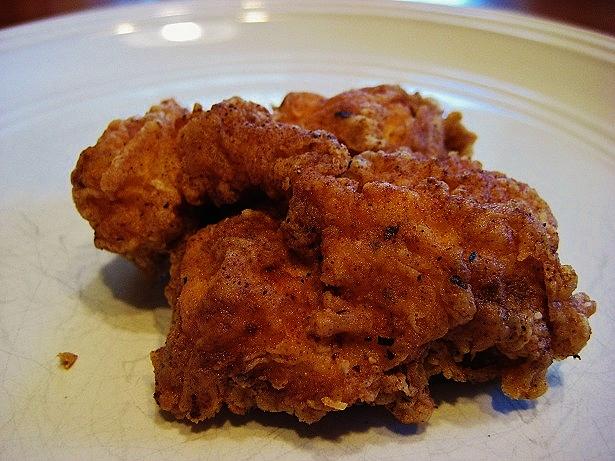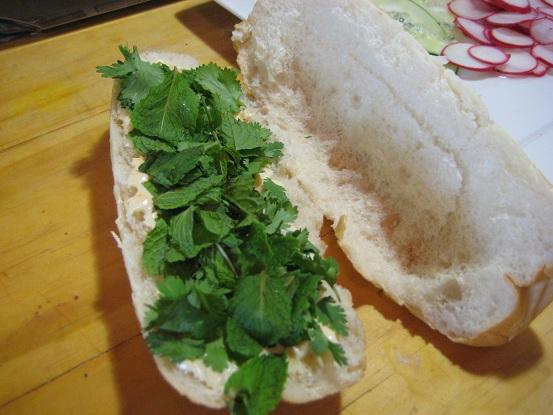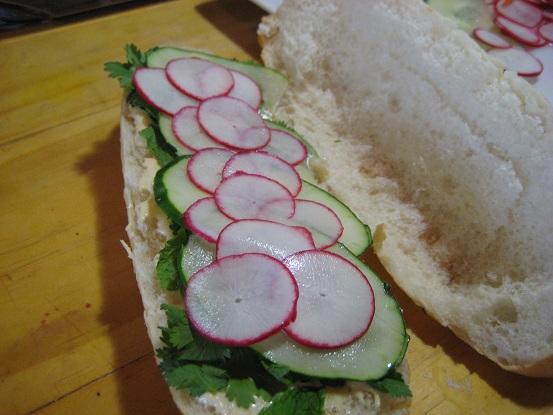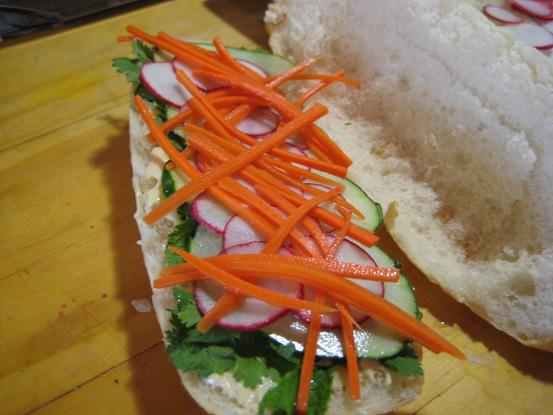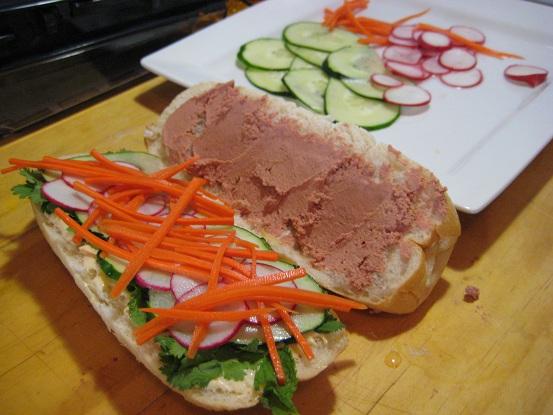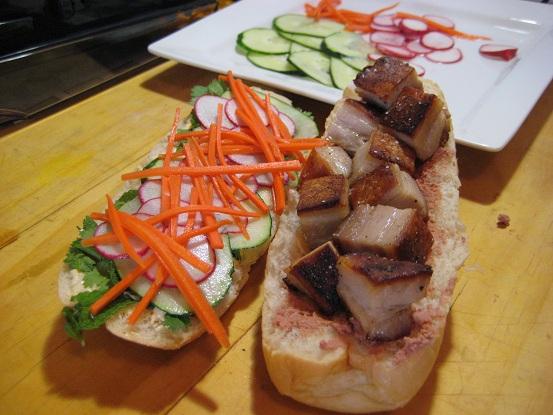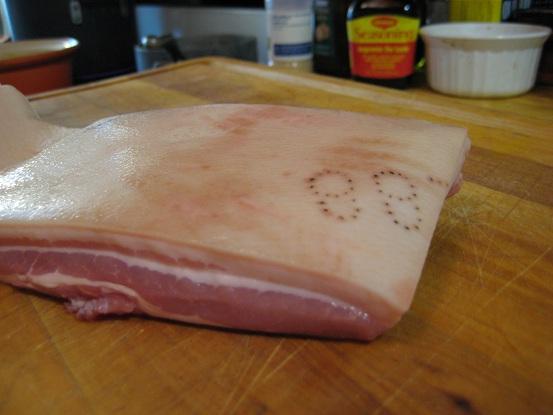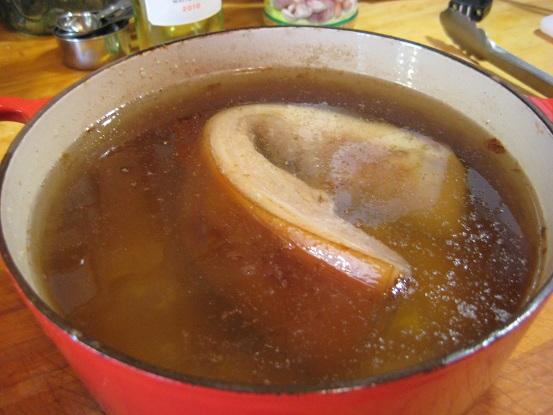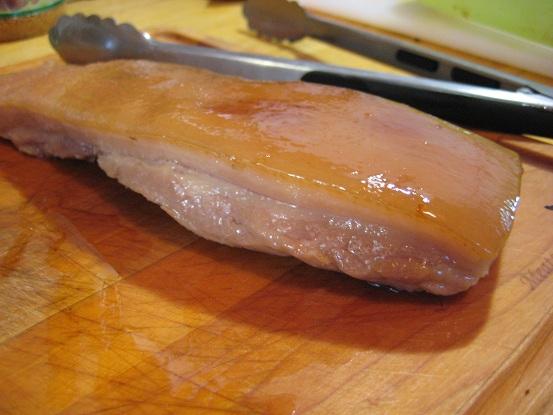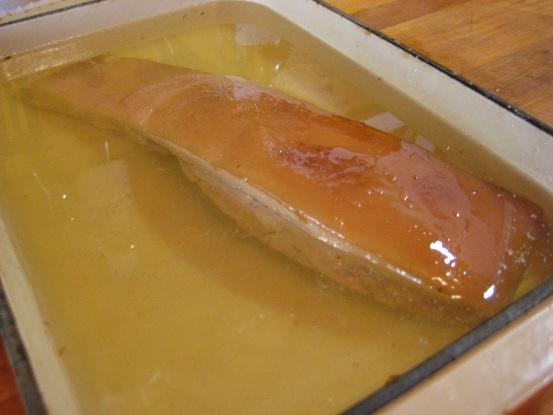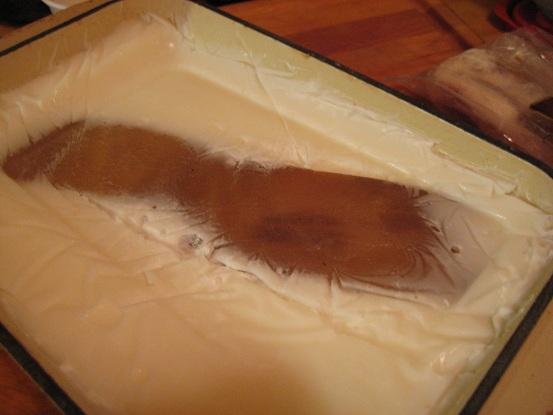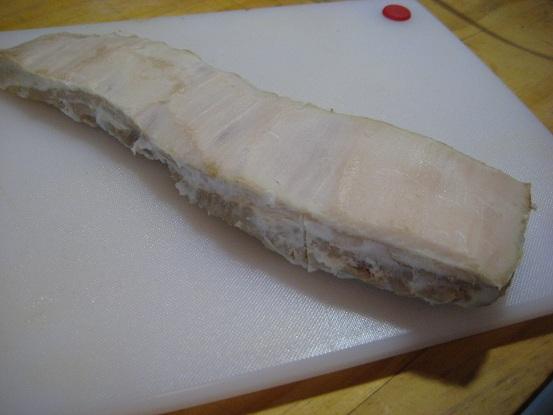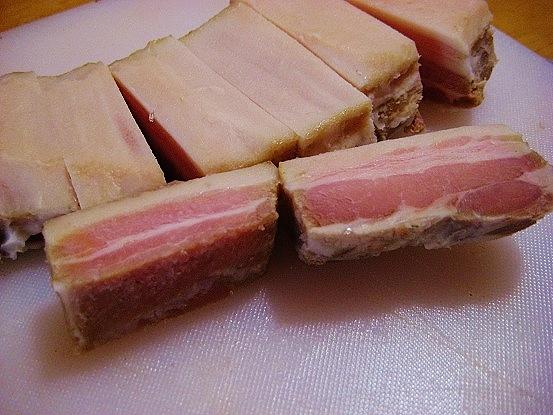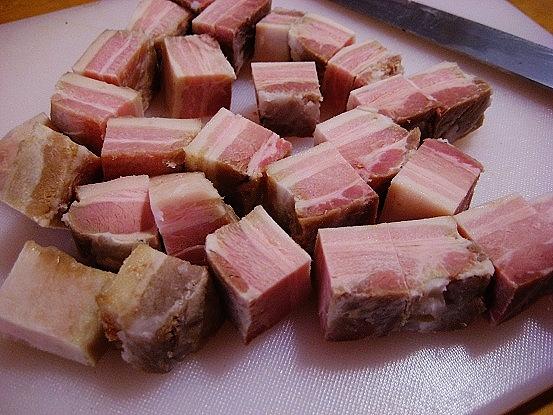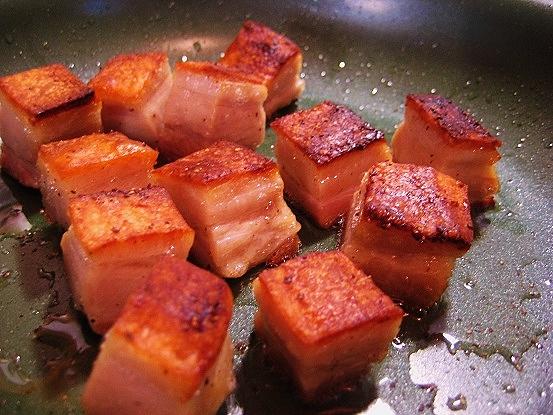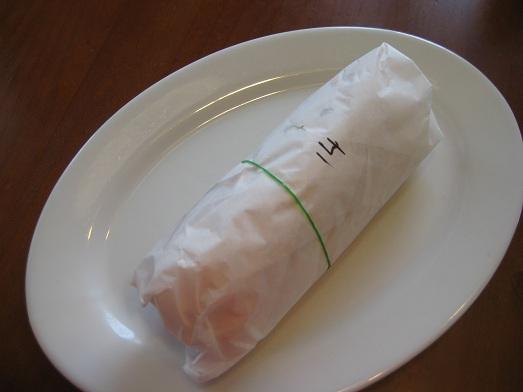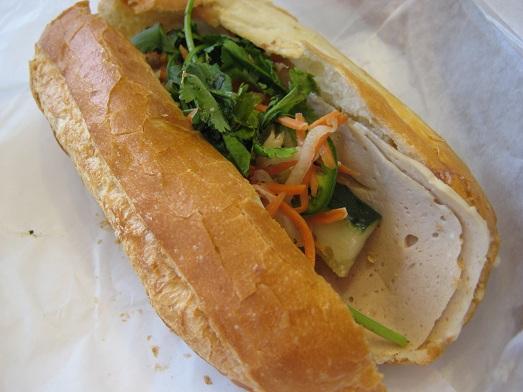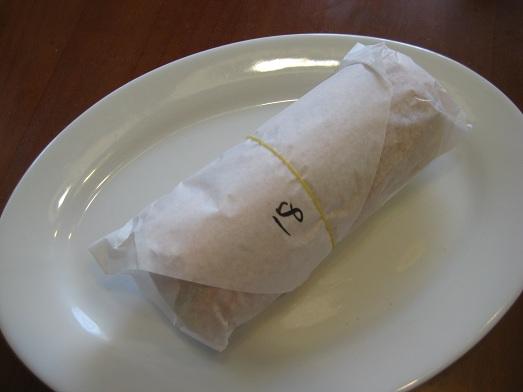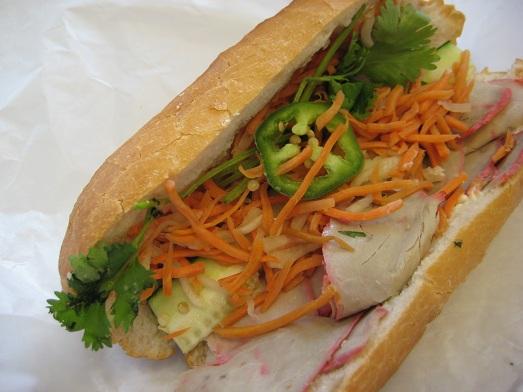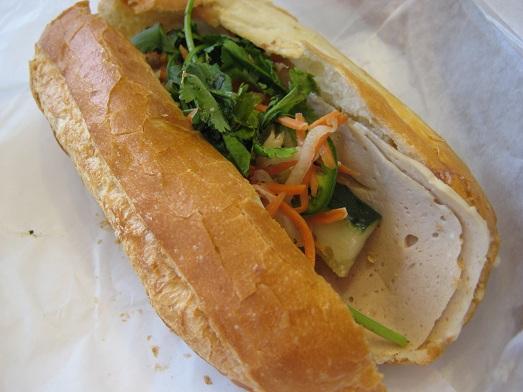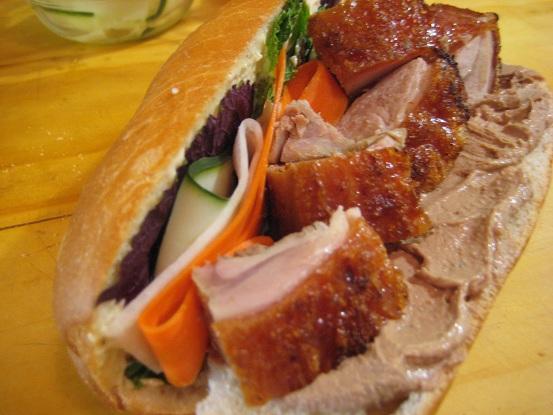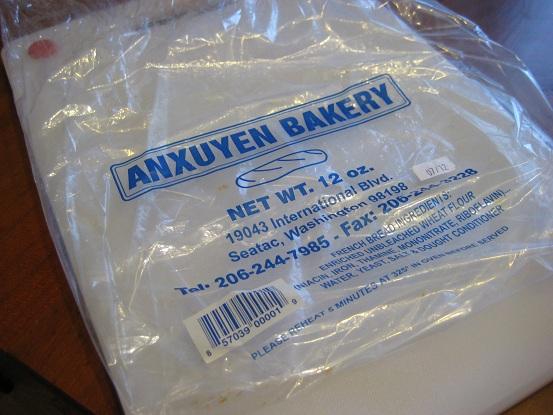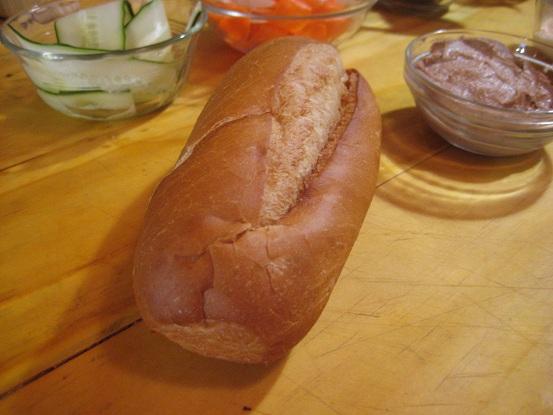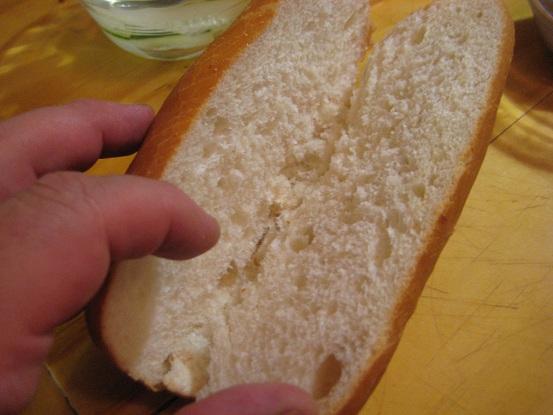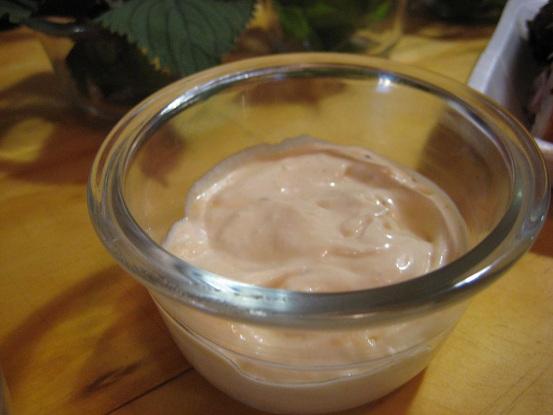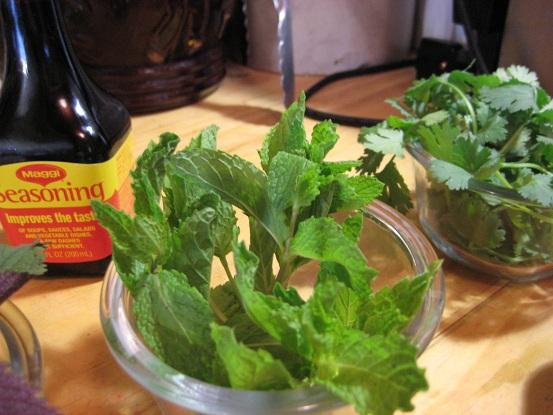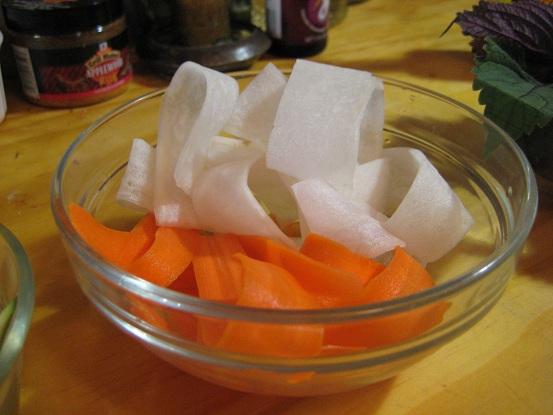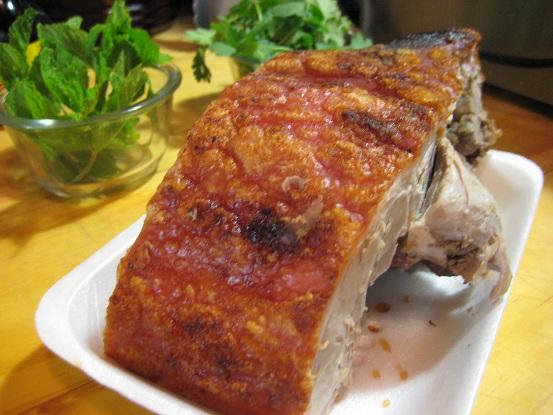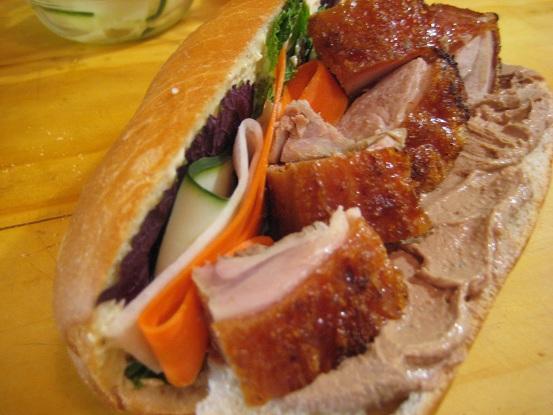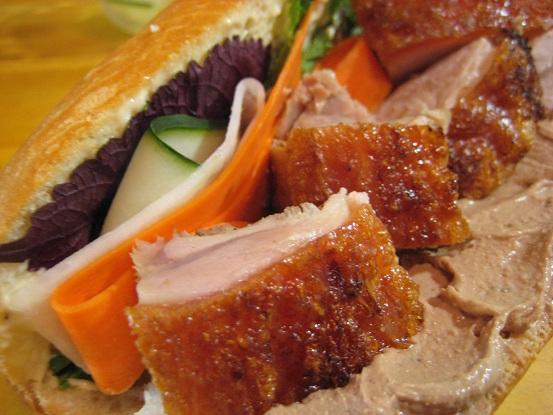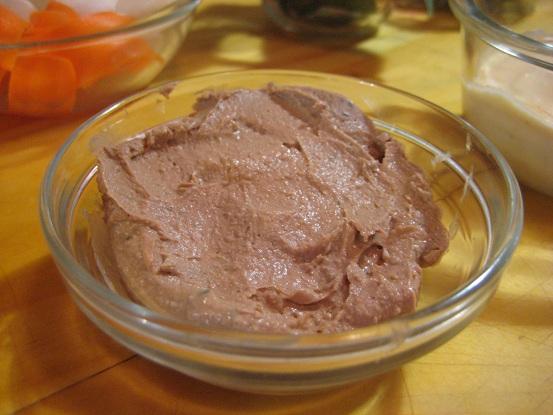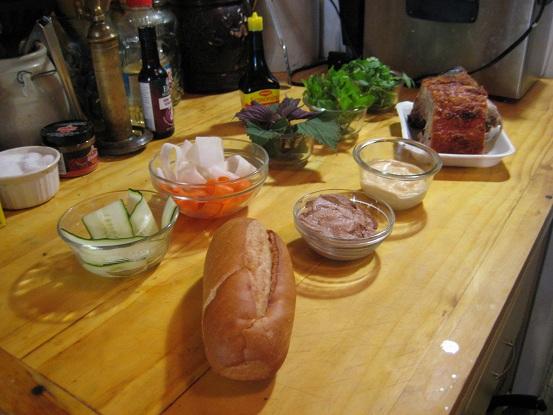-
Posts
5,035 -
Joined
-
Last visited
Content Type
Profiles
Forums
Store
Help Articles
Everything posted by David Ross
-
In the past couple of weeks Caesar's announced some new restaurants. Probably one of the worst kept secrets in town over the past 5 years was when would Bradley Ogden close and what would go in the space. Then once Gordon Ramsay landed at the Paris Hotel with his steakhouse, the worse kept secret was when Gordon would open a restaurant in the Bradley Ogden space. Apparently such issues as contracts take an incredible amount of time, and money, to become something tangible in Las Vegas. Goodbye's were passed out to Ogden and his staff last week, (apparently then actually welcomed the final word), and within two days I received a press release announcing Gordon Ramsay's Pub at Caesar's Palace. One hopes it's far better than the Pub down the road with the name of Todd English over the door. Caesar's then announced a few days later that the long awaited reconstruction of the buffet, (formerly known as Cafe Lago), will open in September under the name of Baccahnal Buffet. It sounds like its going to top the bigger and more lavish buffets in Las Vegas.
-

REPORT: eG "Heartland" Gathering 2012 (Philadelphia)
David Ross replied to a topic in Pennsylvania: Dining
Now how did you get that machine on an airplane out of Oklahoma? -
Brining the chicken in pickle juice made a nice contrast to the crisp, sliced dill pickle on the bun. Another reason I suppose why the pickle-brine makes sense.
-
The recipe called for about 1 cup of pickle brine for the chicken. I used two large breasts cut in half lengthwise then in quarters. I just poured the brine out of a bottle of Clausen Kosher Dills. But next time I'll use the natural brine from my favorite brand of Kosher dill pickles which are made locally.
-
We don't have a Chick-Fil-A within hundreds of miles of my house, which some would say is a good thing while others weep. The recent frenzy got me interested in making a good chicken sandwich at home. This recipe http://www.food.com/...-copycat-439307 is very good. Brining the chicken in dill pickle juice is nearly a revelation, at least it was to me, but it makes sense--salt, vinegar, water and spices--all ingredients that go into a brine, but the dill/Kosher/pickle flavor added a salty, tangy flavor twist to this brine. I marinated boneless, skinless chicken breast overnight in the pickle juice. I was a bit aghast this morning when I pulled the chicken out of the fridge and saw that it looked like over-cooked ceviche--pale white and the texture looked cooked. Not to worry, the chicken was decidely still raw but had picked-up that pickle flavor. Instead of all flour, I used 3/4 cup all-purpose flour and 1/4 cup cornstarch to insure the skin got crispy. Pressure fryers typically don't produce extra-crispy deep-fried foods, so you need a boost from cornstarch. The pickle brine was plenty salty, so I'd omit the salt called for in the recipe that goes in the flour mixture. Now I'm lucky to have a thirty year-old, consumer size combination deep fryer/pressure cooker akin to what I've found Chick-Fil-A, (and Colonel Saunders), use on a commercial scale. The chicken was dipped in beaten whole eggs, dredged in the seasoned flour, then deep-fried for about 2 minutes in canola oil placed heated to 350 in the pot. Then the pressure lid went on and I cooked the chicken for 6 minutes. This is the delicious result with a beautiful golden crispy crust and soft, moist, briny chicken meat- I'll be adapting this recipe to regular, bone-in fried chicken.
-
You won't be disappointed in Mina. I was there for a private lunch during Uncork'd in May and it was fabulous. A friend of mine who lives in Las Vegas and is a Food Writer has been to Mina twice in the past couple of months and reported it was outstanding on both visits. I'm hearing and reading very good reviews about Gordon Ramsay Steak. I was one of the skeptics before it opened, but based on what I'm hearing, the service and the food is really quite good. The few bumps in the road on opening week have apparently been smoothed over.
-
And here's the assembly of my Banh Mi #2- I cut some of the bread out of the inside of the roll, all the more room to stuff in meat, vegetables and condiments- Top layer, mayonnaise, cilantro and mint- Then radish and cucumber- And pickled carrot- Bottom layer spread with pork pate- With far too much delicious pork belly- So it's obvious that I've tinkered with tradition here, but in the end, using tradition as the base to adapt the Banh Mi into a contemporary sandwich that fit my tastes worked out just fine--and I gained a new friend that works in the Asian market where I bought the bread and the pork belly--she invited me to come back after hours for a personal lesson in making Banh Mi. Any other Banh Mi adventurers out there?
-
My second Banh Mi, #2 as it were, was loosely based on #1--Same French Roll from the Vietnamese bakery in Seattle, roast pork, pickled carrot, cucumber, radish, lots of cilantro and mint, sriracha mayonnaise, liver pate and Maggi. But I changed up a few things-- -I thinly sliced the cucumber in cross-slices this time instead of lengthwise, but I kept the cucumber raw, not pickled with the carrot. -Instead of daikon, I used fresh red radishes, sliced thin and left unpickled. -Only cilantro and mint this time, no basil, (and it wasn't missed). -Instead of homemade chicken liver pate, I tried two different pork liver pates- -A canned liver pate made in Canada that was on the shelf at the Asian grocery store. Didn't like the flavor--it was very strong and had that "canned" almost metallic taste. One only knows how long it's been in that can. -Oscar Mayer "brunschweiger" liver sausage, a pate really, often known as the dreaded liverwurst. If I had ever brought a liverwurst sandwich into the school cafeteria when I was a kid I would have been run out of the place. Never ate it until last week. Now I love it--fresh tasting, not overly strong and with a good mix of spices and not a lot of sugar. Just right--and much better than my chicken liver mousse in Banh Mi #1. And then there was the pork. That wondrous pork based on a recipe from one Thomas Keller's "ad hoc at home" cookbook. A pork recipe that will last through the ages--and will now be a feature at one of my upcoming cooking classes. I dream of a month from now when I'll make this pork and serve it with fresh Washington huckleberries. Keller's recipe is called "Confit of Pork Belly" and as is his wont, Chef Keller cuts no corners--the recipe involves few ingredients but demands perfect technique and develops over the course of literally days. I started with a nice piece of pork belly from the Asian Market. I worried it was too thin in terms of not being meaty enough, but in the end it was just the right size for what would end up in the Banh Mi- Leaving the skin on, or rind as we call it in my neck of the woods, the pork belly was submerged in melted lard and put in a 200 oven, covered, to poach in the fat for about 6 hours- The cooked pork belly "confit" out of the oven- Then placed in a heavy casserole and the strained, melted fat poured over- Then covered loosely with plastic and weighed down with a smaller casserole filled with cans of beans to press down on the pork belly. Into the fridge for four days of chilling- Porky doesn't look to appetizing at this point. He's been washed of his fat bath and he knows what is coming next- Just what pork confit should look like- I finally discovered what I was doing wrong when cooking pork belly. Why was that "rind," (skin), as tough as boot leather? Listen to Chef Keller my dear boy-"cut the skin off before you cook the pork belly confit." Duh. Here is the pork belly confit, cut then cubed- Then into a hot pan, skin side down, seasoned with some pepper, heat turned down to medium, and sauteed until the skin turned brown and started to crisp. Then into the oven, broiler on, pan on middle rack, and broiled for about 3-4, minutes, (you decide how long it takes), to finish crisping and browning the pork belly confit-
-
Yep. Out West we call them crinkle cut. I find the frozen version, which are made not far from where I live, to not taste as fresh as fresh-cut fries. I can make a reasonable crinkle cut fry with the hand tool, but it's really labor intensive. I've seen some of the french-fry presses, but they all seem to have just straight cutting blades.
-
I'm an incurable crinkle cut fry addict, but I've never found a good cutter or method for cutting crinkle cut fries at home. I've tried the crinkle cutter with the handle, cheap and expensive mandolines with a "wavy" cutter blade, on and one. None of them have produced the same 3/8" crinkle cut fries I get at the local Mom and Pop burger shops. Anyone have suggestions for a good crinkle cutter?
-
"The aroma attracts kibitzhers......" (from a 1956 barbecue cookbook)
-
Anyone ever had any toasted peanuts or nuts in a Banh Mi?
-
I once said "Bitchin Kitchen" was the worst food program on TV. I was wrong..."The Culinary Adventures of Baron Ambrosia," on The Cooking Channel is more deplorable than even the nastiest critic could have ever imagined. Even if it is intended to be satire, (the batteries used as hair curlers notwithstanding), it's bad satire. The worst common denominator I am sure.
-
-
I took the advice from our discussion and trekked out to a local Vietnamese Pho shop in search of a traditional Banh Mi from a Vietnamese kitchen. I ordered two different Banh Mi, the first, the “14-Banh Mi Cha,” listed on the menu as “Pork ham, pate and mayonnaise.” I immediately recognized the French roll, it came from the same Seattle bakery as the rolls I bought at the Asian grocery store down the street. It was warmed, the crust delicate and crispy, the interior dough soft and light. But the bread was one of the few saving graces that kept me from chucking out this Banh Mi. There were two thin shards of an undetectable, compressed, white meat. It was devoid of any flavor of either ham or pork. There was pork pate in the Banh Mi, about a teaspoon or so, smudged on one end of the bread. The carrot and daikon, (actually more carrot and a few threads of daikon), had no flavor, the cilantro was limp, and there was only one thin slice of jalapeno trying to boost the heat factor of the sandwich. The thick piece crisp, pickled cucumber was good, as was the rich homemade mayonnaise. “#14” was a good “Cucumber, Mayonnaise Sandwich on a French Roll,” it just wasn’t a very good Banh Mi. Next up was the “18-Banh Mi Xa Xiu” billed as Barbecue Pork. The red-rimmed pork loin appeared to have come out of the supermarket deli case--about two weeks ago. It had more pork flavor than the “ham” in Banh Mi #14, but that’s not saying much since the ham tasted of nothing. Same shallow carrot/daikon “pickle” and limp cilantro. #18 could have used a boost, more than a teaspoon this time, from the pork pate. Good bread, same good mayonnaise and pickled cucumber, but a faint representative of what I think any of us would want in a Banh Mi. I’m glad I tried a restaurant-made Banh Mi. It adds to my understanding of what goes into the making of a Banh Mi, (and what to avoid), and now I have a better perspective of how to craft another Banh Mi at home. But having a better perspective doesn’t mean I have a clear perspective about this sandwich. In fact, after lunch today, I’m more tempted to craft Banh Mi at home to suit my own tastes while launching into a mission to find a better Banh Mi in a restaurant. Today’s trip wasn’t a lost affair. The price of the Banh Mi was only $2.75 each for a very large sandwich. Clearly in this case cost didn’t equate to either value or quality. The search is early on, but after today, I’d give the advantage to my roast pork Banh Mi over #14 and #18.
-
thanks for posting the video. Yes, it's always pork liver, and why most of us probably only want a light smear of it on our bahn mi. More than that and the gaminess and richness would overwhelm the other flavors. Long ago, once or twice I ordered my bahn mi sans pate, not being a fan of pork liver. Big mistake (aside from the look I got from the guy making the sandwich). The only analogy I can think of is from music--it tasted as if the bass note was missing against all those bright flavors. If that makes sense. Is the texture of the pork pate smooth yet firm, or is it more of the mousse consistency of the chicken liver spread I made?
-
David, I have no doubt that your sandwich was delicious, it certainly looked so to me. The only reason I commented on it being an "Americanized" version is because you noted at the start of this topic that you'd never had bahn mi before. I find it helpful to understand the baseline before i veer away from it and thought you might too. These days there are many riffs on bahn mi, between food trucks and restaurants, but even the tasty variations leave me craving the standard. A really good one gets the balance of flavors just so... Looking forward to yur next one. As fate would have it, I found a Pho shop just blocks away from the Asian grocery store. I'm going to try a few of their Banh Mi on Friday and I'll report back as to whether or not I prefer their version over what I made at home. I think it will give me a better idea of the ratio of meat, veg and sauce/pate.
-
You know, what's somewhat ironic about this discussion of "Americanized" Banh Mi is the fact that I typically am a traditionalist when we do these cook-offs. No fluffy, trendy, chi-chi, "fusion" blends of an authentic dish ever creep into my thinking when I'm planning a dish. Yet this cook-off I've veered off the path, (albeit in my mind not too far), to test the waters of crafting a Banh Mi to suit my own tastes. And respectfully putting conventional wisdom aside for a moment, that was a really, really good sandwich. I'm a little more, (just a little), convinced that one can fudge a bit in the kitchen and still come up with something quite tasty. The next Banh Mi I'll be doing will also test the borders of tradition, but not too far. At least I don't think so.
-
Yes, plenty of cilantro. In all honesty, this was so good that even though it might not have technically been a spot-on Banh Mi, I'm not sure I would want to change it at all. Thanks for the suggestions though, if I can control my inner carnivore, I'll try more salad than meat when I make the red-cooked pork Banh Mi.
-
Well, I think my first attempt at a Banh Mi sandwich was fairly admirable. A few mis-steps along the way, like buying what I thought was purple Thai basil—only to find out it was something quite different—and quite wonderful. Here is the step-by-step photos of the making of my Banh Mi, from the top layer on down. (I don’t know if the layering of the ingredients in a specific order makes a difference, but I was intentionally layering the flavors and textures to, I hoped, create the best Banh Mi I could). The Bread- I bought the bread rolls at the local Asian grocery store. The bread is delivered fresh from a Vietnamese bakery in Seattle. It felt a little soft right out of the bag, so I let the rolls sit on the counter for about 6 hours to crisp-up the crust. The Mayonnaise- O.K., I’m a sucker for homemade mayonnaise in a sandwich. But I sort of kept it within the vast region of Southeast Asia with the addition of some sriracha. (And a few drops of Asian-style Maggi). I went too light on the sriracha so I’ll stir in a few more spoonfuls for the next Banh Mi. The Herbs- The licorice, mint, spice and fragrant notes of basil, mint and cilantro seem like a natural pairing to counter some of the richer flavors in the sandwich—but I found a few surprises when I was facing the produce section of the market. There were 4 different varieties of mint, including both peppermint and spearmint. I thought peppermint might be too minty, and I was worried that spearmint might also be too strong, but casting away from tradition I took the spearmint. Now what I thought was a bag of fresh purple Thai basil turned out to be anything but. When I got home and opened the bag, I tore into a leaf to taste it. The leaves weren’t shiny like basil, more textured in fact. It had subtle notes of licorice like basil, but it had an exotic, floral fragrance with notes of pepper and spice. And then I found out what was in the bag, purple perilla, noted as “one of the favorite herbs in the Vietnamese culinary palette,” according to the Viet World Kitchen site. I had bought a bag of herbs that I mistook for basil, yet ended up with a Vietnamese herb, for a Vietnamese Banh Mi. One is sometimes lucky in this world of culinary discovery. The Pickles- A scan of Banh Mi recipes called for a mix of shredded carrot and daikon steeped in a pickling liquid. Such things always create a bit of anxiety on my part as I’ve never been a successful pickler. I chose a recipe that called for making a hot pickling brine, then letting it cool and adding in finely shredded carrot and daikon and letting the pickling take place overnight. I followed the recipe to a “t,” but then this morning when I checked on the pickled mix, my pickling horrors were realized. The brine had basically sucked the life out of my hours of shredding efforts. The carrots and daikon were limp and sad looking. Yet not to worry, I fell back on a staple “quick-pickling” method I’ve used for years, and I took my own path for how I was going to cut the carrot and daikon. I used my mandolin to cut the carrots and daikon into the thinnest, long ribbons I could muster. Then into a bowl with a sprinkle of salt, sugar, a few glugs of rice vinegar and a dab of water. That’s it. Raw vegetables in a cold brine. The carrot and daikon came out crisp, clean and refreshing—and not too heavy on the “pickle.” The Pork- I knew the pork belly would be the biggest challenge in crafting a Banh Mi, and trust me please, I had every intention of roasting my own pork belly. That it until I saw a beauty of a roasted Chinese-style pork belly sitting in the cold case at the market. Delivered fresh after a hop over the mountains from Seattle, this little piggy did go to the market. I poked the little devil through his thin layer of plastic wrap and the skin, all golden and burbly, was crisp to the touch. I just knew I had to take this pork belly home. Why make it at home when you can buy a better product crafted by chefs who have been roasting pork for years? I covered the pork belly in foil and heated it in a 350 oven for about 30 minutes, then another 2-3 minutes under the broiler to re-crisp the skin. I stole a bite of the pork belly as I was making the Banh Mi and I was glad I bought it at the store. It reminded me of the flavors of Chinese roast duck, (another idea for a Banh Mi), with just a hint of five-spice powder. The Pate- All I could find in the Asian grocery store was some pork pate stuffed into a little can. I didn’t think I could trust it, and I had a new recipe for a chicken liver pate, (a mousse really), that I thought would work quite well. Playing on the theme of marrying French and Vietnamese cuisines, the mousse was a traditional French preparation that included chicken livers sautéed in butter and shallots, then a flambé with brandy. Then more butter, (a lot of butter actually), thyme and cream. It was lush, silky, liver-rich and one of the three decadent elements of my Banh Mi, (the other two being roasted pork belly and sriracha mayonnaise). And yes, I can now support the statement that the “crumbs are a badge of honor.”
-
Yesterday I went to the Asian grocery store to buy the bread, pork belly and Maggi for my Banh Mi. The clerks have come to recognize me as a regular customer and so they welcome me and are happy to give me advice. The woman who was at check-out saw what I was buying and went into a short lesson on how she prepares Banh Mi. (I actually only caught about half of what she told me, so I'll serve as the interpreter here and describe her method).She said she splits the bread nearly in half, being careful to not cut all the way through, (so it is facing up like a lobster roll). She then adds roast pork, (made from a Chinese deli in Seattle and shipped fresh to Spokane), then drizzles on a little hoisin sauce. (Hoisin makes sense, a sort of sweet and sour flavored sauce). Then some fresh herbs. She didn't say what type of herb or greens, but she pointed to the spearmint, purple Thai basil and cilantro I had in my basket.
-
How amazingly delicious!
-
OK, I think I'm set. How does this sound? Banh Mi #1- Bread top Chicken Liver Mousse Carrot/Daikon Pickle Maggi Roast Pork Sliced Cucumber in Orange Vinaigrette Bread bottom Banh Mi #2- Bread top Siracha Mayonnaise Red-Cooked Pork Pickled Watermelon Slices Fresh Basil Fresh Mint Bread bottom
-
There are a few topics but I think this one is the one you are thinking of. Excellent info and pictures. Thanks for the link. I'm going to use that style of roast pork in a Banh Mi with a smooth chicken liver pate. I'll be doing another one with red-cooked pork and pickled watermelon instead of vegetables. Now that's going to be a really red Banh Mi!
-
Anyone ever tried a Banh Mi with fruit substituting for the traditional pickled carrot and daikon mix?


